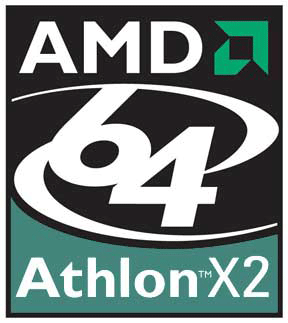|
|
AMD Athlon 64 X2 4200+ & 4800+ Preview
[Abstract]
Final Words Now armed with final silicon, our stance on AMD's Athlon 64 X2 doesn't change at all - AMD clearly has the faster overall dual core desktop solution, but at a price that will be out...
[Content] PCDigitalMobileGame
Both AMD and Intel appear to be playing release date games with their latest dual core processors.
Intel's affordable dual core desktop solution, the new Pentium D, officially launched in the middle of last month, but has yet to be seen in the channel.
AMD appears to be joining in on Intel's game and is lifting their NDA on Athlon 64 X2 performance today, instead of waiting until June as they had originally planned. Note that the timing of today's article doesn't mean that there's any change in the Athlon 64 X2 release or shipping schedule. The CPUs still won't be available until Q3 or Q4 of this year, but AMD appears to want to get performance numbers out there as soon as possible; given the impressive performance that we had previewed in our first article, it's not much of a surprise from AMD.

In our first AMD dual core article, we simulated the performance of an Athlon 64 X2 4400+ using an Opteron x75 CPU. This time around, we have two chips from AMD, both officially Athlon 64 X2 processors, to give you a better feel for the actual dual core Socket-939 performance that you'll be seeing later this year.
We've already discussed the pricing and lineup of AMD's Athlon 64 X2 line, but as a quick refresher, here are the tables from our original review:

For starters, the Athlon 64 X2's clock speeds aren't that low compared to the current single-core Athlon 64s.聽 The top of the line Athlon 64 FX-55 runs at 2.6GHz, only 200MHz faster than the Athlon 64 X2 4800+.聽 This is in stark contrast to Intel's desktop dual core offerings, which run between 2.8GHz and 3.2GHz, a full 600MHz drop from their fastest single core CPU.聽

Today, we'll be taking a look at two CPUs in particular: the top of the line Athlon 64 X2 4800+ and the entry-level Athlon 64 X2 4200+. Both are Socket-939 CPUs and will, when released, work in all Socket-939 motherboards with a BIOS update. For today's article, all tests were run on an ASUS nForce4 SLI motherboard with no changes other than a BIOS update to enable support for the Athlon 64 X2 processors. For the Intel CPUs, we used Intel's own 975X board.聽 All systems were configured with 1GB of memory and used the same Seagate 120GB PATA HDD and ATI Radeon X850 XT video card.聽 We used the latest Catalyst 5.4 drivers.聽 The AMD system used DDR400 with 2-2-2-5/1T timings, while the Intel system used DDR2-667 with 4-4-4-15 timings.
We've talked quite a bit about the impact of dual core on the desktop, but to keep things to the point, if you're interested in knowing a bit more, please take a look back at the following topics:- The Intangible Dual Core
- Scheduling and Responsiveness
- Characterizing Dual Core Performance
- Dual Core System Impressions The benchmarks used in this article (including the multitasking tests) are identical to those used in our first AMD dual core article.
|
|
|

 AMD Athlon 64 X2 4800+ Review (2005-05-10)
AMD Athlon 64 X2 4800+ Review (2005-05-10) AMD Athlon 64 X2 4800+ (2005-05-10)
AMD Athlon 64 X2 4800+ (2005-05-10) AMD Athlon 64 X2 4800+ Dual-Core Processor Review (2005-05-09)
AMD Athlon 64 X2 4800+ Dual-Core Processor Review (2005-05-09) Athlon 64 3800+ and DFI LanParty UT Ultra-D Giveaway (2005-05-07)
Athlon 64 3800+ and DFI LanParty UT Ultra-D Giveaway (2005-05-07) AMD Changes Prices, Strikes Out Athlon MP, Athlon XP-M (2005-05-03)
AMD Changes Prices, Strikes Out Athlon MP, Athlon XP-M (2005-05-03) Athlon 64 X2 Pricing Revealed (2005-04-26)
Athlon 64 X2 Pricing Revealed (2005-04-26) AMD Launching Dual-Core Athlon 64 Tomorrow (2005-04-23)
AMD Launching Dual-Core Athlon 64 Tomorrow (2005-04-23) AMD's Opteron, Athlon 64 X2 with Two Cores Unveiled (2005-04-21)
AMD's Opteron, Athlon 64 X2 with Two Cores Unveiled (2005-04-21) AMD Athlon 64 3200+ Socket 939 Review (2005-04-12)
AMD Athlon 64 3200+ Socket 939 Review (2005-04-12) Unannounced AMD Turion 64 Chips Make It to Market (2005-05-09)
Unannounced AMD Turion 64 Chips Make It to Market (2005-05-09) HP Sells Unannounced AMD Sempron Processors (2005-05-06)
HP Sells Unannounced AMD Sempron Processors (2005-05-06) AMD Supports Latest Steps Taken by Governments (2005-05-06)
AMD Supports Latest Steps Taken by Governments (2005-05-06) AMD Turion 64 Mobile Microprocessor Reviewed (2005-05-05)
AMD Turion 64 Mobile Microprocessor Reviewed (2005-05-05) AMD Opteron 875 Outperformed by Intel Pentium Extreme Edition 840 (2005-05-05)
AMD Opteron 875 Outperformed by Intel Pentium Extreme Edition 840 (2005-05-05) AMD Price Cuts (2005-05-05)
AMD Price Cuts (2005-05-05) 



